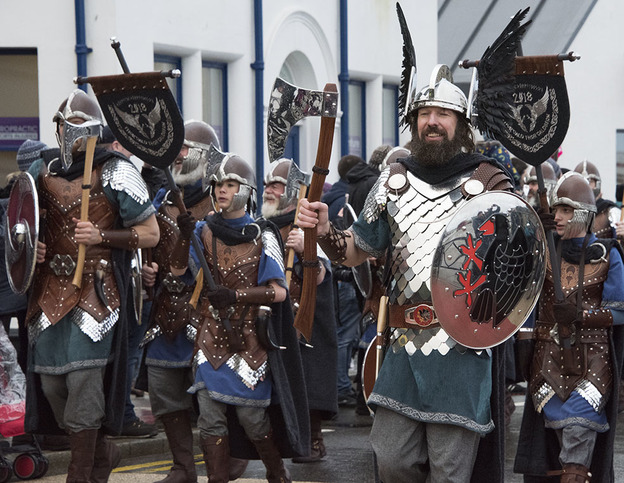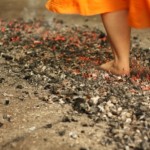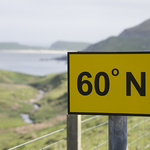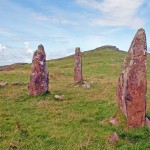A hundred years from now, Shetland’s fire festival, Up Helly Aa, will be the stuff of legend.
A litany of morphed tales of Viking lore handed down over the generations, titivated and embellished in the process…rather like all legends, in fact.
For the time being, Up Helly Aa is, as legends go, quite modern, and while there is some evidence that rural Shetlanders celebrated the twenty-fourth day after Christmas as ‘Antonsmas’, or ‘Up Helly Night’, there is no extant evidence to show that the people of Lerwick did the same.
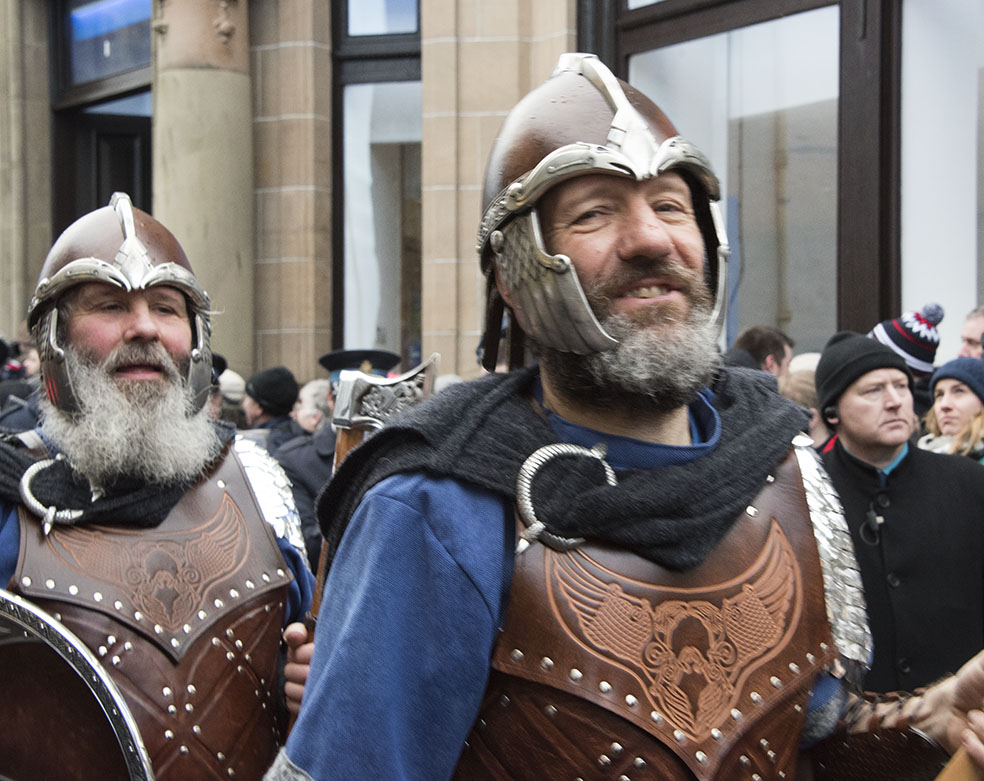
The roots of this celebration seem to be grounded in the years following the Napoleonic Wars in the early 19th century: soldiers and sailors fortunate to have survived came home, bringing with them an assortment of boisterous habits, some of which may (or may not) be passed off as enthusiastic thanksgiving. Towards the end of 1842, a visiting preacher described how the whole town was in uproar with the ‘blowing of horns, beating of drums, tinkling of old tin kettles, firing of guns, shouting, bawling, fiddling, fifeing, drinking and fighting’. Whatever the raison d’être, as Lerwick grew, so the celebrations became more elaborate.
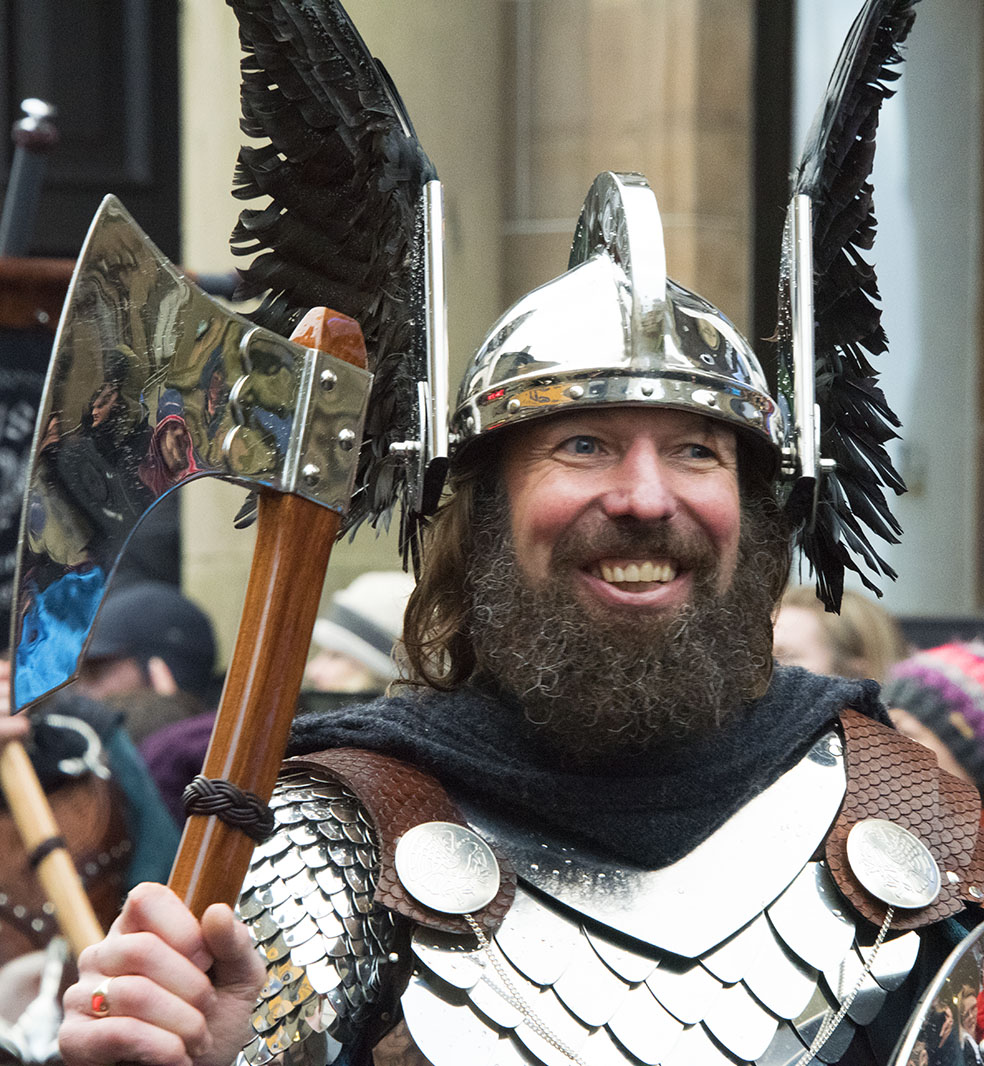
Around the middle of the 19th century, someone thought it would be a bright idea to introduce burning tar barrels into the proceedings, which in the narrow streets of Lerwick also added flaming danger to the occasion, notably when rival groups of tar-barrellers clashed. This potentially explosive interlude lasted until around 1870, when the young folk of Lerwick appear to have unilaterally decided to effect a change to the proceedings, bringing it closer to the format in evidence today.
The first change was the introduction of a name for the festival. The significance of ‘Up Helly Aa’ has been variously interpreted over the years, but consensus suggests that the expression owes its modern form to the Old Norse for weekend or holiday – Helly – and so Up Helly Aa, often without the second ‘a’, signifies the end of helly, or holidays, or, as is generally accepted these days, the end of the Yule period.
To fit in with this, the event was moved to the end of January and now rests, always, on the last Tuesday in January, come hail, rain, snow, blizzard, high tides or any one of sundry other reasons for not even thinking of going out.
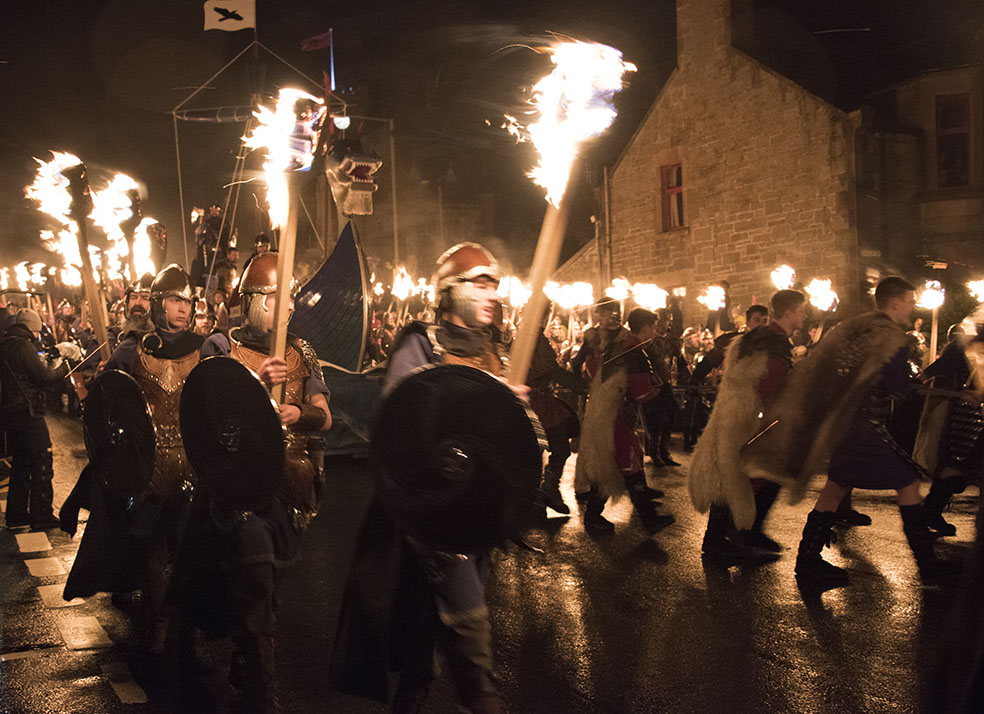
Then came a decision to add a new element, ‘guizing’, from ‘disguise’, into the proceedings, and to inaugurate a torchlit procession through the town. But it was not until the 1870s that the link with Viking heritage came to the fore, and even later, in the 1880s, that a Viking longship – the galley – was introduced. In 1906, a ‘leader’ was appointed, the chief guizer, known as the Guizer Jarl, the first being J W Robertson.
It was later still, not until after the First World War, that a squad of Vikings, under the leadership of the Guizer Jarl, was a regular feature of the festival. In 2018, the Guizer Jarl, was Stewart Jamieson, chosen to represent Thorvald Thorvaldsson, son of Torvald Thoresson, who was, back in 1981, portrayed by Stewart’s own father, Harry Jamieson.
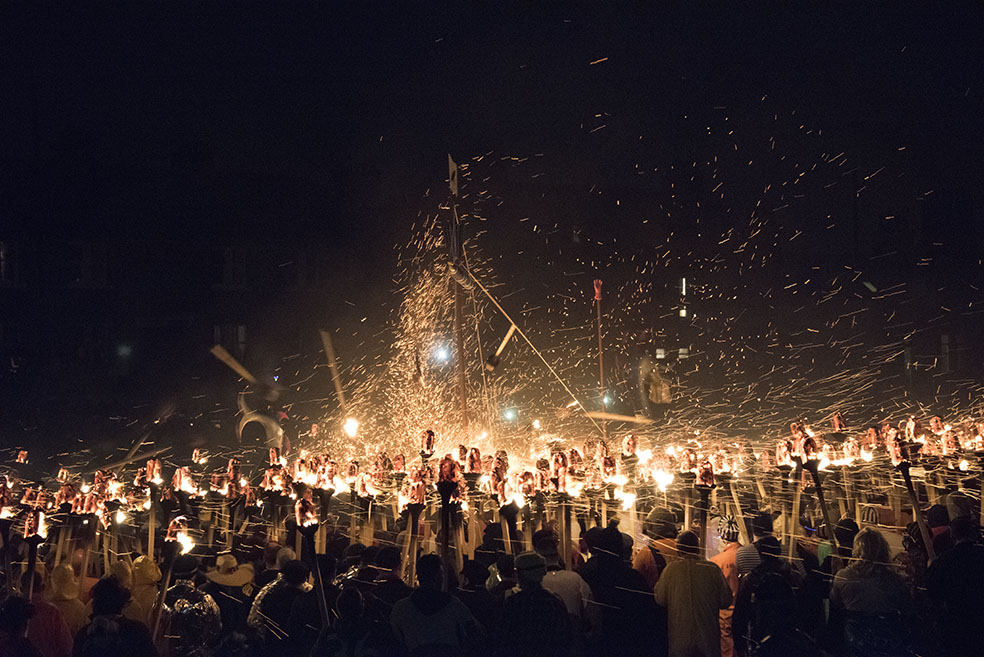
Now the festival’s main purpose is to remember the Vikings who used to rule Shetland more than 1,000 years ago, but that tenuous association has been some time in coming; not that it matters…a hundred years from now, all these niceties and distinctions will have blended into one glorious celebration of Shetland folklore, and tales of excitement and mayhem around winter fires.
To say that Up Helly Aa 2018 got off to a bang is an understatement: the pyrotechnic explosion, on the stroke of seven-thirty, that marked the official start of events was like the sound of thunder breaking over your head, and it echoed around the streets of Lerwick for some time.
Then, in the distance drums and pipes sounded, torches were lit, and the smoke from them preceded the assembled squads towards the town hall and then down to circle the streets around King George V’s Playing Field. Only the lead, or Jarl Squad, is permitted to wear Viking costume, most of which have been a year in the making.
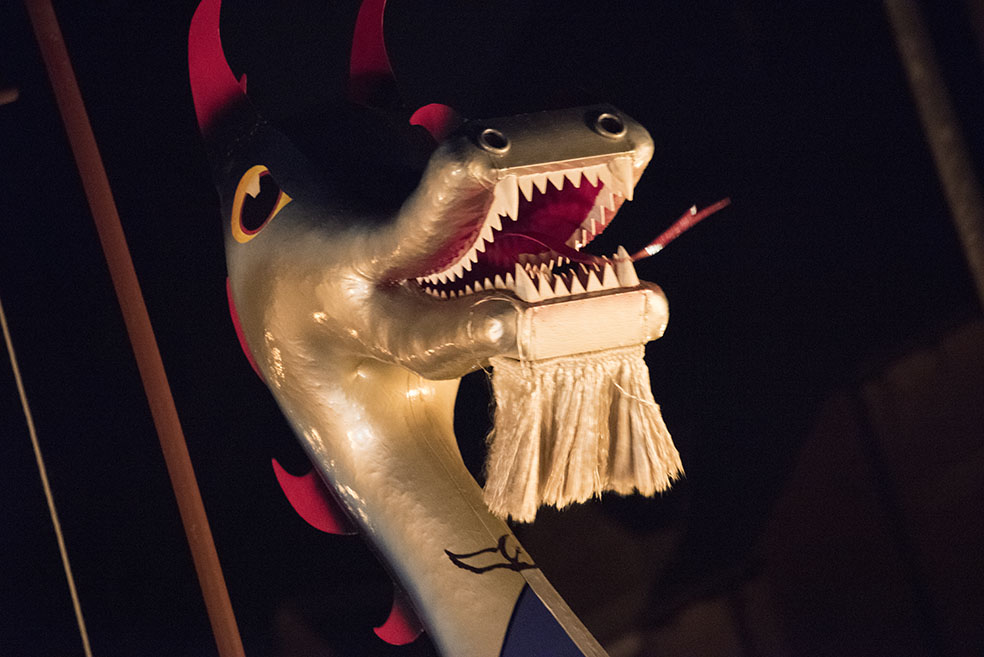
But in their wake come anything up to 1,000 other celebrants, all ‘disguised’, aka in fancy dress; all bearing flaming torches, sparks from which assault everyone briefly, and create an ever-moving backdrop of whirlwind light to go with the Viking cries and howls of delight, and the occasional Celtic interloper of ‘Oggy, Oggy, Oggy’.
It would be ignoring the obvious not to acknowledge that many of those in costume − imaginative attire in varying degrees of imagination and effort − had been preparing for the celebration throughout the day in one or more of Lerwick’s licensed hostelries.
But this was all inordinately well-behaved and entertaining. Indeed, the prevailing spirit of Up Helly Aa is one of comradeship, courtesy, conviviality, music, dancing and fun. But if you must partake of a dram of malt, or Up Helly Aa special brew Shetland gin, then no-one will mind.
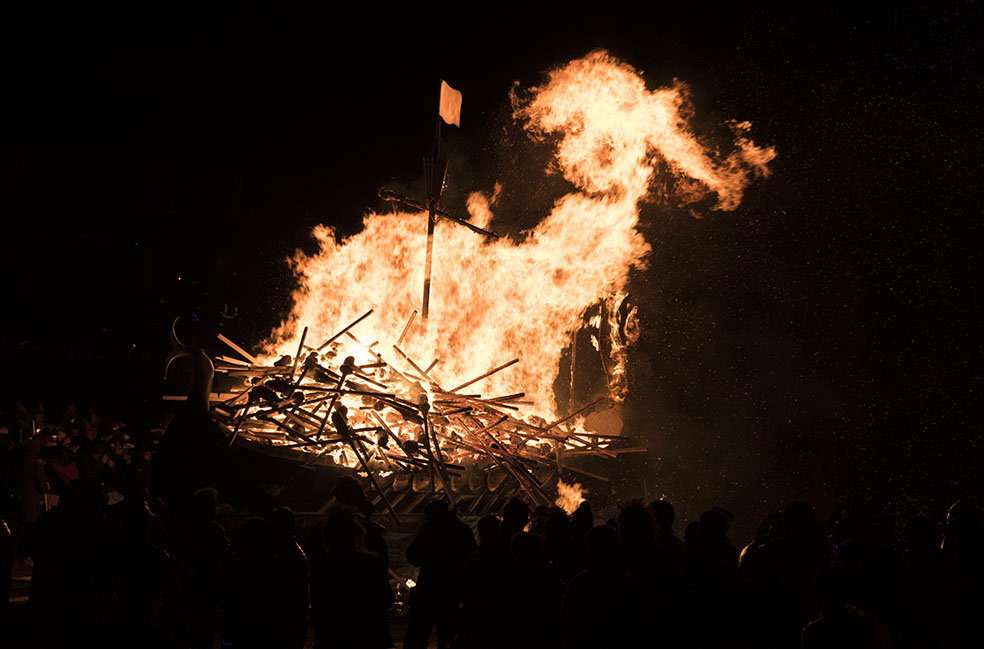
Once the parading is complete, the assembled squads gather around the galley. Words are spoken, songs are sung, and a bugle call marks the moment when everyone’s torch is thrown onto the galley in a symbolic gesture that commemorates the Viking tradition when a chief died of setting him adrift in a flaming boat, his soul bound for Valhalla. Squads re-assemble and sing ‘The Norseman’s Home’ before dispersing, as a spectacular fireworks display brings the public proceedings to an end.
For many, however, the invited only, there are visits to the ‘Halls’, wherein the festivities continue well into the night, or, no doubt, the following day, too.
All images (c) Terry Marsh
Tell me more about Up Helly Aa
The main Visitor Information Centre is situated in Lerwick town centre at the Market Cross. Tel: 01595 693434.
Getting to Shetland
Shetland is now better served byhttp://www.northlinkferries.co.uk ferries than ever before, with departures seven nights a week in both directions on the Aberdeen-Lerwick route all year round, with three calls a week at Kirkwall, Orkney, en route.
Flights to Sumburgh Airport in Shetland are operated by the long-established Scottish airline, Loganair. Their direct services to Shetland, the scheduled flight times and the maximum frequencies are as follows:
Aberdeen 1 hour Up to 5 flights per day
Edinburgh 1 hour 30 minutes Up to 3 flights per day
Glasgow 1 hour 30 minutes Up to 2 flights per day
Inverness 1 hour 45 minutes Up to 2 flights per day; stops briefly in Orkney
Kirkwall, Orkney 40 minutes Up to 2 flights per day
Manchester 1 hour 35 minutes 1 flight on Saturdays
Flight connections and code-sharing
You can make connections with these services from airports all over the UK and overseas. What’s more, Loganair has code-sharing agreements with British Airways and BMI Regional. These allow through booking and your luggage will be transferred between flights. Travelling on code-shared flights also has an important benefit that, should any flight be late, you’ll be re-booked on the next available connection.
The codeshare agreement with British Airways allows you to book flights to Shetland from any point in the BA worldwide network, using the BA website (www.britishairways.com). For flights from places on the BMI Regional network, you can use the Loganair website (www.loganair.co.uk),
If you’re making a connection onto a Loganair flight to Shetland, it is advisable to do so at Aberdeen if possible. That’s because, should there be any disruption to the Shetland flight, you can easily transfer to the overnight ferry. Most Shetland flights operate to schedule, but summer services are occasionally affected by fog and, in winter, gales may sometimes cause delays or cancellations.

